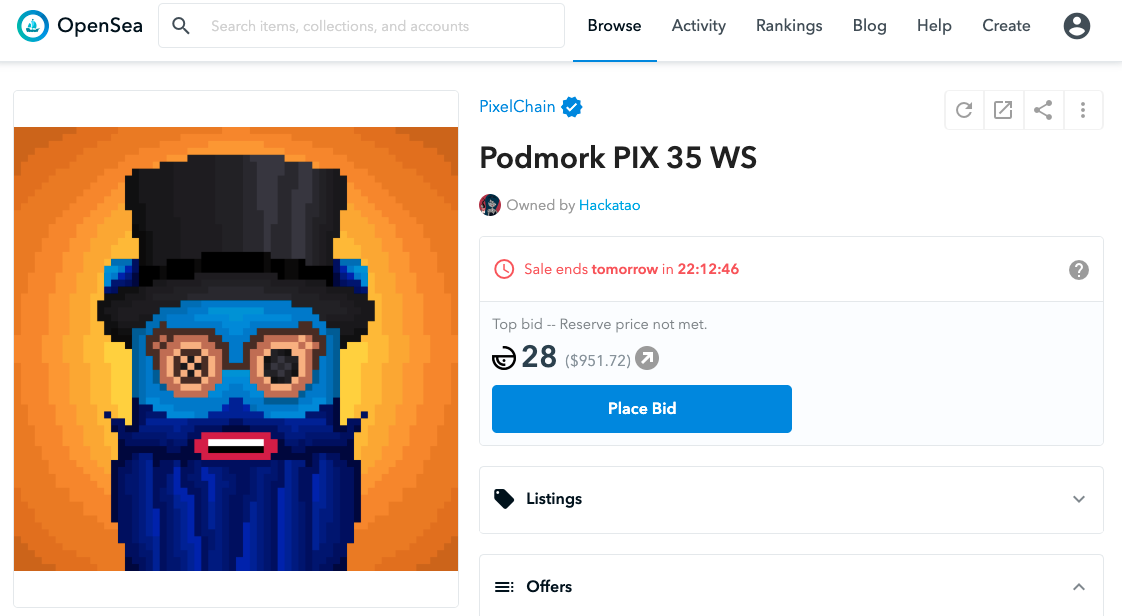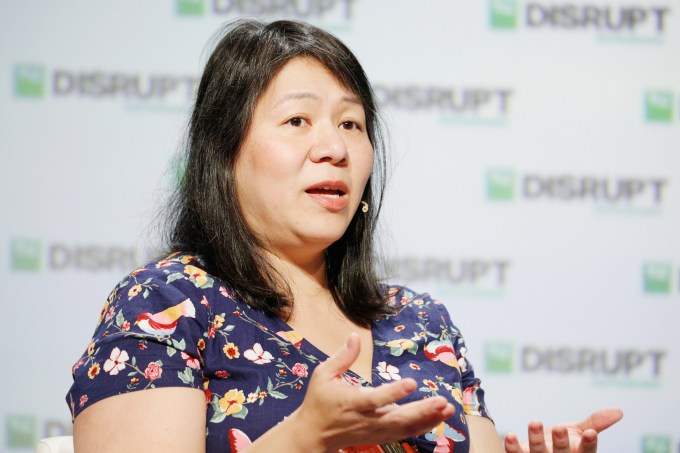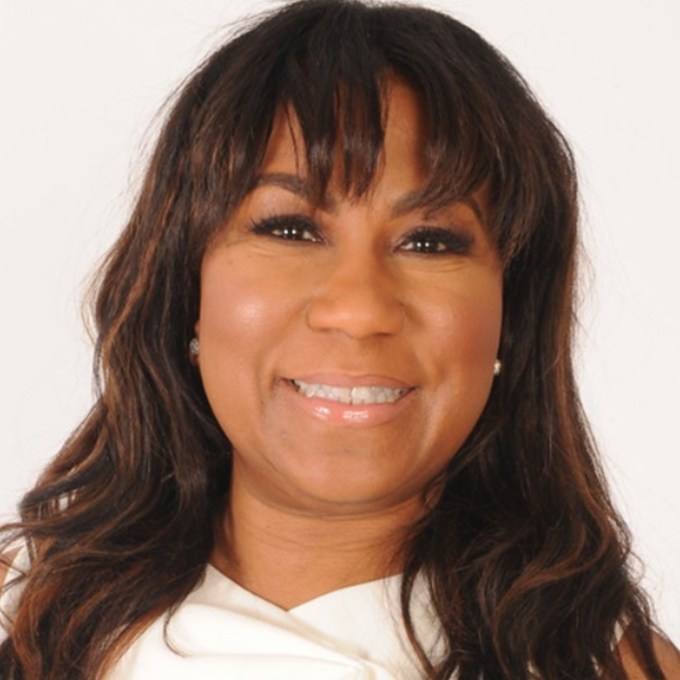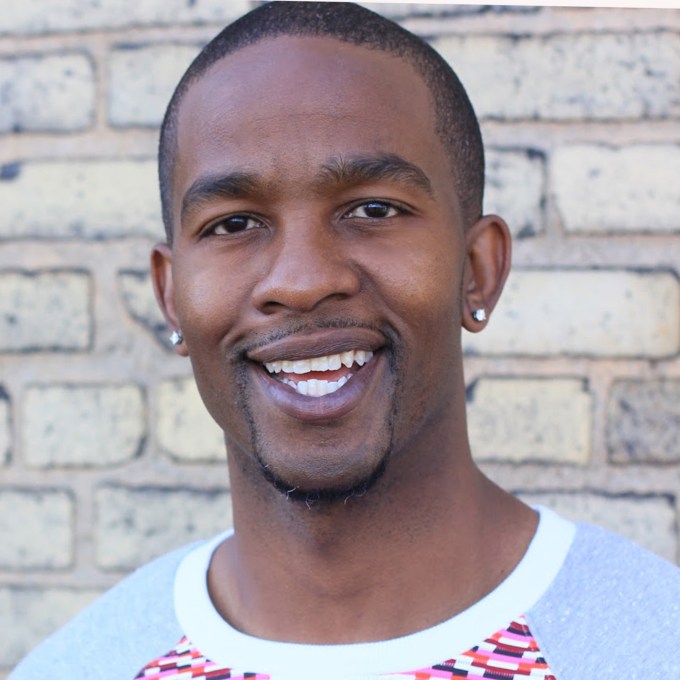Digital collectibles are having a very large moment. Just last month, a piece of digital art by Beeple sold for $6.6 million on online art marketplace Nifty Gateway. Meanwhile, Linkin Park’s Mike Shinoda recently sold clips of a song via online marketplace Zora. Over on Dapper Labs’ NBA Top Shot, more than 200,000 people recently waited hours for the chance to buy one of just 10,631 packs of digital NBA moments.
Those marketplaces, along with others, are where people go to buy digital assets, or, non-fungible tokens (NFTs) that live on the blockchain. This whole world of NFTs is super new to me (I’ve only been using Top Shot for a couple of weeks now) so I caught up with a couple of NFT creators to break it down for me, as well as share some insights on where they think the space is going, and it’s overall potential.
“The way I like to explain NFTs, they are digital assets with true ownership and provenance,” Ronin the Collector told TechCrunch. “You can track their origin and they can only be owned by one person.”
Many people, myself included, at some point wonder why someone would pay for a short video clip of, for example, Stephen Curry making a three-pointer when you download it to your computer for free.
“Humans inherently, whether we will like to admit it or not, want to own things,” Ronin said. “And I think that that’s part of the human experience is owning things. When you own things, it’s a connection, and it’s like you have reason for being and there’s something unique about ownership. And I think that at the end of the day, yeah, you can you can watch it all you want. But can you sell it?”
With that clip as an NFT, you can. As an example, one user bought a LeBron James dunk for $208,000 a couple of weeks ago, according to CryptoSlam. Last month, Top Shot reached nearly $50 million in marketplace transactions. Then, over a 24-hour period last week, Top Shot saw more than $37 million in sales, according to Cryptoslam.
As to why they’re blowing up right now, Ronin attributes it to a couple of things: the pandemic that’s forced everyone behind a computer screen and an easy entry point. Top Shot, for example, makes it super easy for plebeians like me to sign up and you don’t need to have a crypto wallet. You can just use your credit card. The same goes for Nifty Gateway.
But Top Shot and Nifty are outliers, Ronin said. For the majority of NFT platforms, you need to have an Ethereum wallet. As Cooper Turley, crypto strategy lead at Audius, wrote on TC, “this means collectors need to purchase ETH from an exchange like Coinbase and send it to a non-custodial address that consists of a long string of numbers and letters to get started.”
That sounds like a whole thing that I, for one, am not ready to dive into. In general, barriers to access continue to be a problem in the NFTs space, Ronin said.
“Projects are just now starting to pay attention to the user experience,” he said. “And just barely in time. One of the best rooms I’ve been on Clubhouse was one that talked about how basically, with the whole world watching, how do we not mess this up. So I think when you have a product like Top Shot, which is easy to get into, easy to sign up for, and easy to purchase. You have to use a credit card, you don’t need crypto and throw in the mix that everyone’s online and then Beeple sells $3 million worth of digital art, and all of a sudden, people want to pay attention. So I think that was the catalyst.”
But an even more expansive and interesting arena for NFTs than Top Shot is the world of NFT art. Ameer Carter, an artist that is also known as Sirsu, got into NFTs last summer thanks to a friend, he told TechCrunch. Pretty much immediately, he said, he realized the transformative nature of the technology.
“We literally have creative immortality,” he told me he realized at the time.
But the art world has historically been inhospitable to Black folks and people of color, and especially in the world of NFTs, Carter said. The traditional art scene, Carter said, is elitist. And while Carter himself is a classically trained artist, he hasn’t been able to make his way into the traditional art world, he said.
“And it’s not because of lack of trying,” he said.
Carter said he’s had a number of conversations with art curators who all love his work, but they’ve told him it’s not “something that they could build a whole curriculum around and intellectualize,” he said. What NFTs do is enable artists like Carter to create and share their art in a way that hadn’t previously been afforded to them.
“And this is a much more open and accessible platform, and environment for them to do so,” Carter said. “And so my goal is to help really give them that type of visibility and empower them to be creatives. My mission is to remove the starving artists stigma. I don’t believe that creativity is cheap. I believe that it is rich. And it enriches and it gives us the reasons why we live in the first place.”
However, Carter said he’s begun to notice white folks taking credit for things Black artists have already done.
“There’s this push and pull between folks who are really about the provenance of the blockchain versus folks who are wanting to predispose themselves as first because they have more visibility,” Carter said.
He pointed to Black artists like Connie Digital, Harrison First and others who were some of the first people to institute social tokens for their fans on the blockchain.
“They were some of the first to deploy and sell albums as NFTs, EPs as NFTs, singular songs,” Carter said. “And now we have Blau that came out and people were saying he’s the first to sell an album. And it’s like, well, that’s not true, technically. But what works and has continued to work is because there’s a lot of hoopla and a lot of money around that sale, that becomes the formative thing as being first because it’s the one that’s made the most noise. And I find it interesting because of the fact that we can literally go back tangibly, and there’s verifiable hash proof that it wasn’t the case.”
These are the types of phenomena pushing Carter to become an NFT archivist of sorts, he said.
“I’m not necessarily a historian, but I think the more and more I get involved in this space, the more and more I feel that pressing role of being an archivist,” he said. “So that culturally, we aren’t erased, even in a space that’s supposed to be decentralized and supposed to be something that works for everyone.”
That’s partly why Carter is building The Well to archive the work of Black artists, like Blacksneakers, for example. The Well will also be a platform for Black artists to mint their NFTs in a place that feels safe, supportive and not exploitative, he said.
On current platforms, Carter said it feels like white artists generally get more promotions on the site, as well as on social media, than Black artists.
“They deserve to have that kind of artists’ growth and development,” Carter said. “Yet it is afforded to a lot of other artists that don’t look like them.”
Carter said he recognizes it’s not the responsibility of platforms like Nifty Gateway, SuperRare and others to provide opportunities to Black artists, but that they do have the ability to put Black artists in a better position to receive opportunities.
That’s partly what Carter hopes to achieve with The Well Protocol. The Well, which Carter plans to launch on Juneteenth, aims to create an inclusive platform and ecosystem for NFT artists, collectors and curators. Carter said he wants artists to not have to feel like they have to constantly leverage Twitter to showcase their work. Instead, they’ll have the full backing of an ecosystem pumping up their work.
“Everywhere else, you look at other artists and they have write-ups, and they have news coverage and things of that nature,” Carter said. “And [Black artists] don’t have a lot of those avenues to compete. You know, I’m in the business of building true equity for us, so part and parcel to that is developing the tools and the ecosystem for us to thrive.”
No longer should art just be for the rich, Carter said.
“We have the ability to completely dismantle that,” he said. “So we have to be very, very, very careful about that and make a concerted effort to make that thing work, but we can’t do it when we have folks entering the space with money erasing folks who were already here. We can’t have that where platforms are not allowing the positioning of artists to grow. You know, we can’t have that when we have folks by and large, fear mongering and trying to get other artists to not be a part of this system.”
It’s also important, he said, for NFTs to not solely be seen as collectible, investable objects.
“Everyone’s getting into the game like it’s a money grab,” he said. “It’s not. It’s playing with artists lives and careers here.”
For those who aren’t yet in on NFTs, there’s still time, Ronin said. Even with the increased attention on NFTs, Ronin says it’s still early days.
“Honestly, I don’t even think we’ve got a full foot into early adoption yet,” he said. “I don’t think you come out of early adoption until we’ve got a solid experience across the board. I think we’re still in alpha.”
That’s partly because Ronin believes the things people will be able to do in five or ten years with this technology will pale in comparison to what’s happening today. For example, Ronin said he spoke with an artist who is experimenting with an NFT experience that will transcend VR, AR and XR.
“And I’m so excited that she chose to work with me and bring me in on this, and use me as kind of an advisor,” he said. “And she can change the world with this technology.”
That’s really what’s so exciting about NFTs for Ronin — the notion that the technology can change your life, and the world, he said.
“And it is a space in which you should feel free to come into and dream big and then figure out how to make those dreams happen,” he said. “You can use AR, VR, mobile, you know, the internet — you can use all these aspects and create an NFT experience that transcends space, transcends time, transcends our life. So it’s a super powerful technology. And I think that people should really pay attention.”
Down the road, Ronin also envisions having connected blockchains “where you can take an NFT from, you know, Bitcoin to Ethereum to WAX to Flow,” he said. “I really think that it’s why this this is that important.”
For Carter, he hopes his work at The Well will help to set a precedent for inclusivity and access in the NFT space. It’s worth mentioning that Carter is also working on the Mint Fund to help minimize the barriers to entry for artists looking to mint their first NFTs. Minting an NFT can be expensive to the tune of $50-$250 depending on how busy the Ethereum network is, and Mint Fund will pay those fees for new artists, making the on-ramp into the world smoother.
“If we don’t do this the right way with the right type of community-driven thinking, then we will lose,” he said. “And it’s not going to look good, it’s going to be ugly. And it’s going to again perpetuate the rich getting richer and the poor getting poorer…We have to find the best ways to redistribute wealth at any given point in time within this economy, within this system. If we do not know how to do that, we are fucked. At least in my opinion.”
There are also conversations in the space around the ecological impact of minting NFTs, which requires a good amount of energy to do. Carter described the existence of two camps: the camp arguing minting NFTs are very ecologically damaging and the ones saying it’s not the fault of minters and you can’t blame them “for minting on a system that is already going to process these transactions, whether they mint or not.”
For Carter, he thinks the first camp could be right, but says there’s just a lot of yelling at this point.
“I think that collectively, us as minters should not feel so fucked up that we can’t do anything anymore,” he said.
Carter also pointed to the energy required to print and ship a bunch of his work.
“To sell one piece of art that I’ve minted versus the energy expenditure and the emissions it takes for me to sell, let’s say 1,000 prints at $20,” he said. “To now shop those to 1,000 different places and for those things to then be transported to 1,000 different homes. Like, maybe they’re comparable, maybe they’re not. I’m not too interested in doing the math at this point.”
Ultimately, Carter thinks there needs to be better access to renewable energy sources and more innovative hardware in the space.
“And the production of creating that innovative hardware also has to be coming from renewable energy sources, like the entire framework should be working to be carbon negative,” he said. “As carbon neutral to carbon negative as possible. And not just the minting side but the mining side. And, you know, the manufacturing side. It’s a cyclical issue.”






